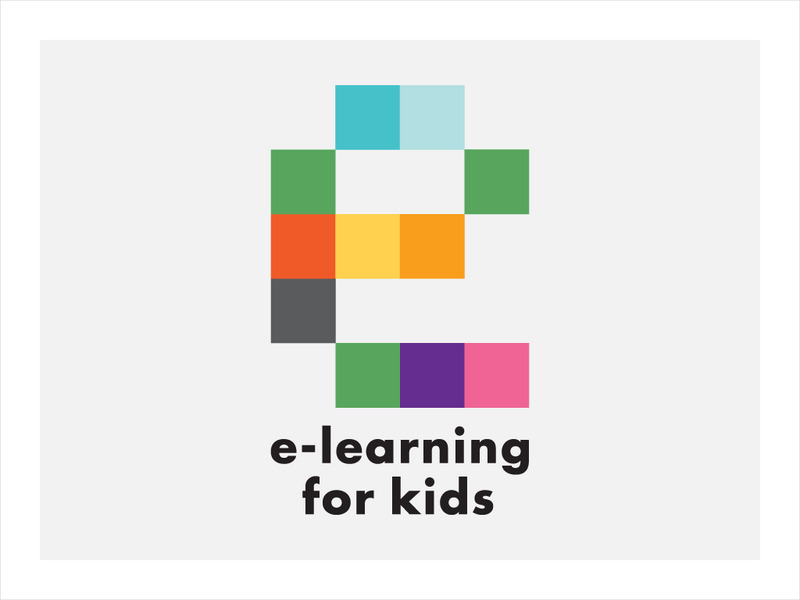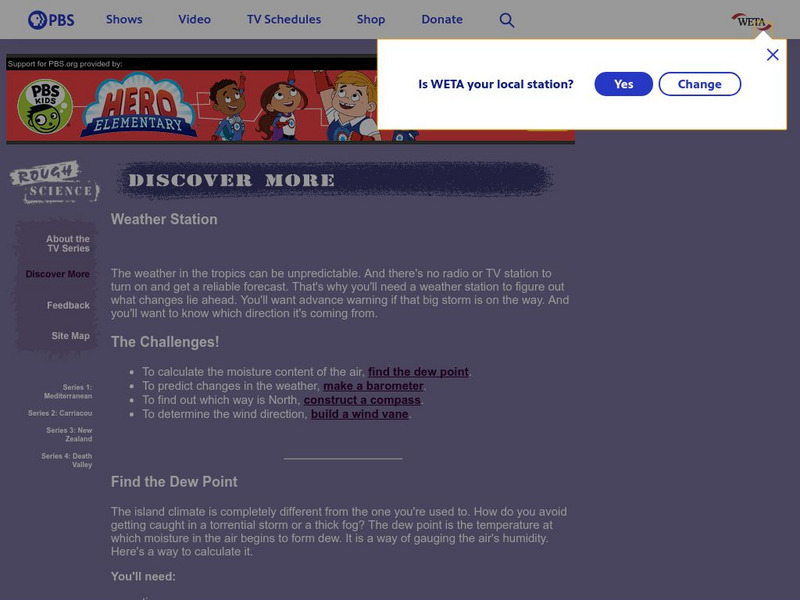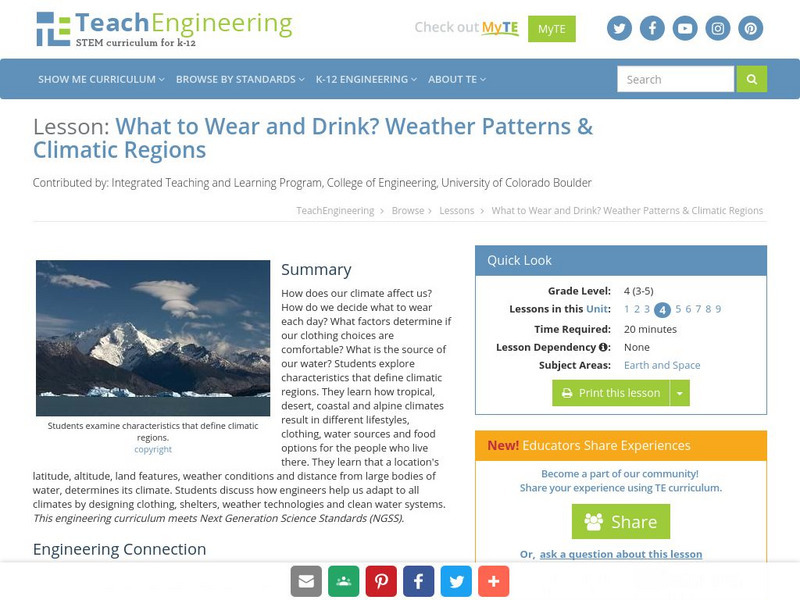Curated OER
Dangerous Air
Young scholars investigate how pollution is a global issue. They locate the countries affected by radiation from Chernobyl, sequence the progress of radiation transport from Chernobyl and plot the pollution points on a world map, and...
Curated OER
Does Global Warming Increase the Intensity of Atmospheric Natural Disasters?
Learners study global warming by communicating the problem, process and solutions. In this global instructional activity students use graphs, research and write a critical stance on natural disasters.
Curated OER
California Crops
Students explore agriculture by researching the native food crops of California. Students define a list of agriculture vocabulary terms and analyze maps of California which explain which foods come from which area. Students write a...
Curated OER
An Introduction to Sensors
Students research the International System (SI) of units of measurements. They make measurements using the metric system. They study key concepts used in building and use of sensors, how sensors work and their role in measuring...
Curated OER
Measuring Temperature
Students conduct an experiment using the steps of the scientific method. In this scientific method lesson plan, students experiment with temperature and record their findings using the scientific method. Students complete a data sheet...
Curated OER
State Facts A Right Angle Puzzle
In this geometry worksheet, students create words making a right angles each time. There are 50 questions to be solved with an answer key.
Curated OER
Oil Spill
Young scholars explore an important role of environmental engineers by studying the Exxon Valdez oil spill. They experiment with different strategies in order to clean up their own manufactured oil spill.
Virginia Department of Education
It Could Happen
Understanding of probability will probably increase with the use of a refined resource. Pupils learn to distinguish between dependent and independent events as they calculate the probabilities of these types of events in various...
Curated OER
Air Masses & Fronts
High schoolers use a set of maps depicting a front passing through the state to identify two distinct air masses and the frontal boundary. They then deterine whether the front is moving in time and in what direction the front is moving.
Curated OER
Trees: Are They Thriving or Surviving?
In this trees survival lesson plan, 8th graders discuss what trees need to grow, brainstorm things that could adversely affect tree growth, and compare characteristics of thriving trees vs. surviving trees. Students learn about the...
Curated OER
Is It Breathable?
Students explore air quality. In this environmental lesson, students observe a simulation of air pollution by blowing into a jar (with a straw) that has chalk dust. Students discuss how air quality can effect the way we breathe.
Curated OER
VOLC TV News Team
Students produce a 5 minute internet news cast about an active volcano
Curated OER
Bank On It! Antarctica
In this vocabulary worksheet, students read an informational paragraph about Antarctica. Students then fill in the 17 blanks with words from the word bank.
Curated OER
Connecticut Reading Comprehension Activity
In this reading comprehension activity worksheet, students read 5 paragraphs pertaining to the history of Connecticut and then respond to 30 true or false, multiple choice, and short answer questions.
Curated OER
Probability
In this Algebra II worksheet, 11th graders compare and contrast experimental probability and theoretical probability. The two page worksheet contains explanation of topic, worked examples, and seven practice problems. Answers are...
Curated OER
Go With the Energy Flow
Students explore energy and nutrient flow. In this science lesson, students diagram the flow of energy through food chains and food webs. Students discuss the importance of energy flow in Earth's ecosystems.
Curated OER
Measuring and Identifying Trees with the Help of Technology
Middle schoolers arrange themselves into small groups. Each group chooses a distance to measure ( the distance between the slide and the swings, for instance). Person #1 walks the distance, counting the number of his or her steps. ...
Curated OER
Newspaper Knowledge
Students read the local newspaper and interpret the written information.
Curated OER
Algebra, Multiplication, and Division of Fractions
Young scholars gain knowledge by measuring time and distance for solving unknowns in an equation. They also will design an airplane and chance to communicate mathematically by writing essays.
Curated OER
Twister Redux
Students pick up science knowledge as they track and examine natural disasters. They keep a daily journal of results and reflections. Students get to follow a real tornado chaser and learn thunderstorm formation. They incorporate how...
E-learning for Kids
E Learning for Kids: Science: Titanic Shipwreck: How Can We Predict the Weather?
Join Tim on the Titanic Shipwreck to understand about weather predictions. Learn about weather forecasts and different instruments that help determine what the weather will be. Win stars for every correct answer and earn a certificate at...
PBS
Pbs: Rough Science: Weather Station
PBS asks users to imagine that they are in the tropics and need to get a reliable weather forecast. It provides instructions on how to build a wind vane, construct a compass, make a barometer and find the dew point.
NASA
Nasa: Precipitation Towers: Modeling Weather Data
This lesson uses stacking cubes as a way to graph precipitation data, comparing the precipitation averages and seasonal patterns for several locations. Variations on the lesson can accommodate various ages and ability levels. Students...
TeachEngineering
Teach Engineering: What to Wear? What to Drink? Weather Patterns and Climatic R
How does our climate affect us? How do we decide what to wear each day? What factors determine if our clothing choices are comfortable? What is the source of our water? Students explore characteristics that define climatic regions. They...























